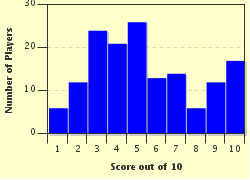Quiz Answer Key and Fun Facts
1. The first dot lies in embryogenesis.
There are three germ layers that form during embryogenesis. What are the germ layers that develop into the heart, stomach and hair, in that order?
2. The second dot is an abnormality in formation of cells.
Which of the following means a state in which cells proliferate abnormally at a very rapid rate?
3. The third dot is in a group of symptoms.
You are a doctor and a patient comes to you with a tumefaction and tenderness in that same site. What do these symptoms even mean?
4. The fourth dot lies in an organ.
Broad ligament, suspensory ligament, PCOS. To which of the following organs are these terms most closely related?
5. Now, the fifth dot lies in patho-physiology.
A patient comes to you and you diagnose him with ITP, which is idiopathic thrombocytopenic purpura. As you go on to explain the condition to him, he asks you, "How do you not know what's causing this? Aren't you a doctor?". What do you think is the cause of his rude question?
6. Now the sixth dot is in one broad type of cancer.
All cancers that can affect an organ are grouped under broad types, which are organ specific. For example, glioma is classified under brain tumors. Now, here are three names of tumors - Phyllodes tumor, Seminoma, Chondrosarcoma. Which of the following broad types is NOT represented here? (For later use, remember the NOT in front of the answer.)
7. The seventh dot lies in a few aspects of anatomy.
Here are the terms for three abnormalities:
1) Amelogenesis imperfecta
2) Ambras syndrome
3) Paget's disease
Can you name, in that order, which parts of anatomy these abnormalities primarily affect?
8. The second to last dot is in a method of treatment or cure.
Plication of sac and excision of sac are two methods of cure for a patient with hydrocoele testis, which is a collection of excess fluid in the scrotal sac. Both these methods require intervention. What type of intervention is needed for both these methods of cure?
9. The last (ninth) dot lies in a joint.
This joint comes under the functional classification of amphiarthrosis. Which of the following is probably the joint that comes under this?
10. If you connect all the dots (right answers), you will get a disease. All answers have some relation to the pathology, physiology, epidemiology, etc., of this disease.
This disease is usually seen in the early ages of a patient. An anagram of the disease is 'metarato'. Struma ovarii is a monodermal form of this disease.
Can you name it?
Source: Author
Saleo
This quiz was reviewed by FunTrivia editor
CellarDoor before going online.
Any errors found in FunTrivia content are routinely corrected through our feedback system.

